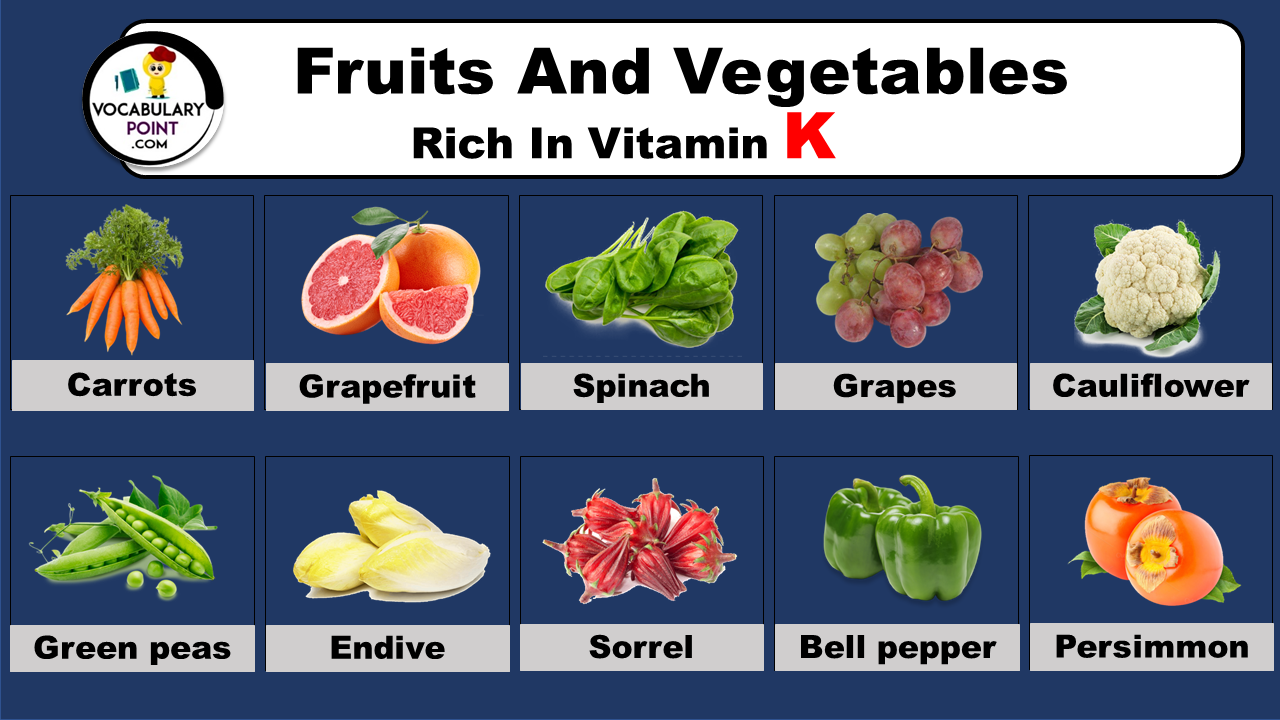Vitamin K is often overlooked in the realm of essential nutrients, but its importance for maintaining healthy blood clotting and bone health cannot be overstated. Luckily, nature has provided us with an abundant selection of fruits and vegetables that are packed with this vital vitamin. From leafy greens like kale and spinach to vibrant fruits like kiwi and prunes, incorporating these foods into your diet can help ensure you meet your daily vitamin K needs while enjoying a delicious array of flavors.
Fruits And Vegetables Rich In Vitamin K
Acerola Cherry
A small, bright red fruit known for its high Vitamin C content. Grows on a shrub native to South America, Central America, and the Caribbean.
Broccoli
A green vegetable with a large flowering head, related to cabbage and Brussels sprouts. Rich in vitamins C and K.
Carrots
A root vegetable usually orange in color, though purple, black, red, white, and yellow varieties exist. High in beta-carotene.
Lime
A citrus fruit, typically green, small, and sour in taste. Used for its juice and zest in cooking and beverages.
Cranberries
Small, tart, red berries often used in sauces, juices, and dried snacks. Known for urinary tract health benefits.
Mulberries
Fruits of the mulberry tree, sweet and slightly tart, ranging in color from white to pink to black. Used in various cuisines.
Guava
A tropical fruit with green skin and pink or white flesh. Rich in dietary fiber, vitamin C, and lycopene.
Broccolini
A hybrid of broccoli and Chinese broccoli, featuring long stalks and small florets. Mild and slightly sweet in taste.
Radicchio
A red and white leafy vegetable with a bitter and spicy taste, often used in salads and as a cooked vegetable.
Cauliflower
A vegetable with a white, dense head (curd) surrounded by green leaves. High in fiber and vitamins.
Chicory
A bitter leafy green or root, often used in salads or for its root, which can be ground and mixed with or substitute for coffee.
Oranges
A popular citrus fruit with a sweet-tart taste, known for its high vitamin C content. Used in foods and drinks.
Asparagus
A green vegetable with long, tender stalks, eaten cooked or raw. Known for its distinct, slightly bitter taste.
Black Mulberry
A fruit that is dark purple to black in color, sweet, and juicy. Known for its antioxidant properties.
Grapefruit
A large citrus fruit with a slightly bitter and sour taste. Comes in varieties of white, pink, and ruby hues.
Gooseberry
A small, sour, translucent fruit, often used in desserts and jams. Comes in a variety of colors from green to red.
Pineapple
A tropical fruit with a rough, spiky exterior and sweet, juicy interior. Rich in vitamins, enzymes, and antioxidants.
Arugula
A leafy green with a peppery flavor, often used in salads. Rich in vitamin K and folate.
Bell Pepper
A sweet, mild pepper available in green, red, yellow, and orange. High in vitamin C and various antioxidants.
Tamarind
A tropical fruit used for its sour-sweet flavor, often in Asian and Latin American cuisines. Comes in a pod-like shell.
Okra
A green, finger-shaped vegetable, often used in soups, stews, and fried dishes. Known for its gooey texture.
Swiss Chard
A leafy green vegetable known for its bright colored stems and slightly bitter taste. Rich in vitamins A, C, and K.
Apricot
A small, orange fruit with velvety skin and sweet, slightly tart flesh. High in vitamins A and C.
Jackfruit
A large tropical fruit with a sweet taste and texture that can resemble meat when cooked. Rich in vitamin B6.
Celery
A crunchy, low-calorie vegetable with a distinctive taste, often used in salads, soups, and snacks. High in vitamins K and C.
Figs
Sweet fruits with a soft texture and multiple small seeds inside. High in fiber and minerals like magnesium and calcium.
Romaine Lettuce
A type of lettuce with long, dark green leaves, crunchy texture, and a slightly bitter taste. High in vitamins A and K.
Tangerine
A small citrus fruit with a deep orange color, easier to peel than oranges. Sweet and less sour than oranges.
Dragonfruit
A tropical fruit with a unique look: bright pink skin and white or red flesh dotted with black seeds. High in antioxidants.
Snow Peas
A type of pea eaten whole in its pod while still unripe. Sweet and crunchy, used in salads and stir-fries.
Bok Choy
A type of Chinese cabbage with white stems and dark green leaves. Mild flavor, used in soups and stir-fries.
Cress
A group of leafy greens with a peppery flavor, often used as a garnish or salad ingredient. Rich in nutrients.
Dandelion Greens
Bitter, nutritious greens from the dandelion plant. Can be eaten raw or cooked, high in vitamins A, C, and K.
Blackberries
Juicy, dark berries known for their sweet and slightly tart flavor. Rich in vitamins C and K, and fiber.
Boysenberry
A large, juicy berry with a deep maroon color, a cross among blackberry, raspberry, and loganberry. Sweet and tangy flavor.
Leeks
A vegetable belonging to the onion family, with a mild, sweet onion flavor. Used in soups and other dishes.
Cloudberry
A rare, amber-colored berry found in cold, boggy regions. Sweet and tart, used in desserts and jams.
Brussels Sprouts
Small, green vegetables resembling mini cabbages. When cooked, they offer a nutty, slightly sweet flavor.
Endive
A leafy vegetable with a bitter flavor, often used in salads. The leaves are white with yellow tips.
Lychee
A small, tropical fruit with a sweet, fragrant flavor. Has a rough, red outer skin and a white, juicy interior.
Plums
Small, juicy fruits with a sweet and tart flavor, available in a variety of colors from purple to red to yellow.
Cantaloupe
A type of melon with a netted skin and sweet, orange flesh. High in vitamins A and C.
Jabuticaba
A unique Brazilian fruit that grows directly on the trunk of its tree. Sweet and grape-like in flavor.
Avocado
A creamy, green fruit rich in healthy fats, vitamins, and minerals. Used in both savory and sweet dishes.
Raspberries
Small, red berries known for their sweet and slightly tart flavor. High in fiber, vitamins, and antioxidants.
Passion Fruit
A tropical fruit with a hard outer rind and a juicy, seed-filled interior. Sweet and tart, rich in vitamins A and C.
Elderberry
Small, dark berries known for their immune-boosting properties. Often used in syrups and jams.
Papaya
A tropical fruit with orange flesh and black seeds. Sweet and rich in vitamins C and A.
Zucchini
A type of summer squash, long and green, with a mild flavor. Versatile in cooking, from baking to grilling.
Nectarine
A smooth-skinned fruit similar to a peach but without the fuzz. Sweet with a slightly firmer texture.
Raspberry
Similar to raspberries, known for their sweet and slightly tart flavor. Rich in fiber, vitamins, and antioxidants.
Artichoke
A flower bud before it blooms, with a hearty texture and unique taste. Rich in fiber and nutrients.
Grapes
Small, sweet fruits grown in clusters on vines. Available in many varieties, both seeded and seedless.
Escarole
A leafy green vegetable with broad, slightly bitter leaves. Often used in soups and salads.
Cranberry
Small, tart, red berries often used in sauces, juices, and dried snacks. Known for urinary tract health benefits.
Blackcurrant
A small, tart berry rich in vitamins C and A, potassium, and antioxidants. Used in juices and jams.
Watercress
A peppery, aquatic plant often used in salads and sandwiches. High in vitamins A, C, and K.
Beet Greens
The leafy tops of beets, rich in vitamins A, C, and K. Can be eaten raw or cooked, similar to spinach.
Kale
A type of leafy green high in vitamins A, C, K, and minerals. Can be eaten raw or cooked.
Cucumber
A long, green vegetable with a crisp texture and refreshing taste. Mostly eaten raw in salads.
Black Raspberry
A berry similar to raspberries but black in color and more earthy in flavor. High in antioxidants.
Starfruit
A tropical fruit shaped like a star when sliced. Sweet and sour in taste, rich in vitamin C.
Green Beans
Also known as string beans, these are green, crisp pods with small seeds inside. Eaten cooked or raw.
Cabbage
A dense, leafy vegetable, green or purple, used in salads, stews, and fermented dishes like sauerkraut.
Collard Greens
Leafy green vegetables, similar in texture to kale but with a milder taste. Often cooked in Southern cuisine.
Mango
A tropical fruit with a sweet, juicy pulp. Rich in vitamins A and C, and dietary fiber.
Green Peas
Small, sweet, green seeds eaten as a vegetable. High in vitamins K and C, and a good source of fiber.
Lemon
A bright yellow citrus fruit with a strong sour taste. Used for its juice and zest in cooking and beverages.
Spinach
A leafy green vegetable rich in iron, vitamins A and C, and calcium. Eaten raw or cooked.
Watermelon
A large fruit with a green rind and sweet, juicy, red flesh. High in vitamins A and C and lycopene.
Pomegranate
A fruit with a tough outer rind and sweet, juicy seeds inside. High in antioxidants and vitamins C and K.
Sorrel
A leafy green with a tangy, lemon-like flavor. Used in soups, salads, and sauces.
Pomelo
The largest citrus fruit, with a sweet and slightly tart taste. Thicker skin than grapefruits.
Clementine
A small, sweet citrus fruit with easy-to-peel skin. Seedless and less acidic than oranges.
Mustard Greens
Leafy greens with a peppery flavor, used in salads, soups, and stir-fries. Rich in vitamins A, C, and K.
Persimmon
A sweet, slightly tangy fruit with a soft to firm texture. Rich in vitamins A and C.
Passionfruit
A tropical fruit with a hard outer rind and juicy, seed-filled interior. Intensely sweet and tart.
Honeydew Melon
A pale green melon with sweet, light green flesh. High in vitamins C and B6.
Snap Peas
A variety of peas that are eaten whole with their crisp pods. Sweet in flavor, used in salads and stir-fries.
Blueberries
Small, blue berries known for their sweet flavor and high antioxidant content. Used in various culinary dishes.
Prunes
Dried plums known for their sweet taste and health benefits, particularly for digestion. Rich in fiber and vitamins.
Gooseberries
Small, sour, green fruits often used in desserts and jams. Rich in vitamin C and dietary fiber.
Kiwi
A small fruit with fuzzy, brown skin and bright green or yellow flesh. Sweet and tangy, rich in vitamins C and K.
Acai Berry
A small, dark purple berry from the Amazon rainforest, known for its antioxidant properties. Used in smoothies and bowls.
Turnip Greens
The leafy tops of turnips, edible and rich in vitamins A, C, and calcium. Can be eaten raw or cooked.
Explore More Fruits Names:
Green Fruits | Summer Fruits | Smallest Fruits
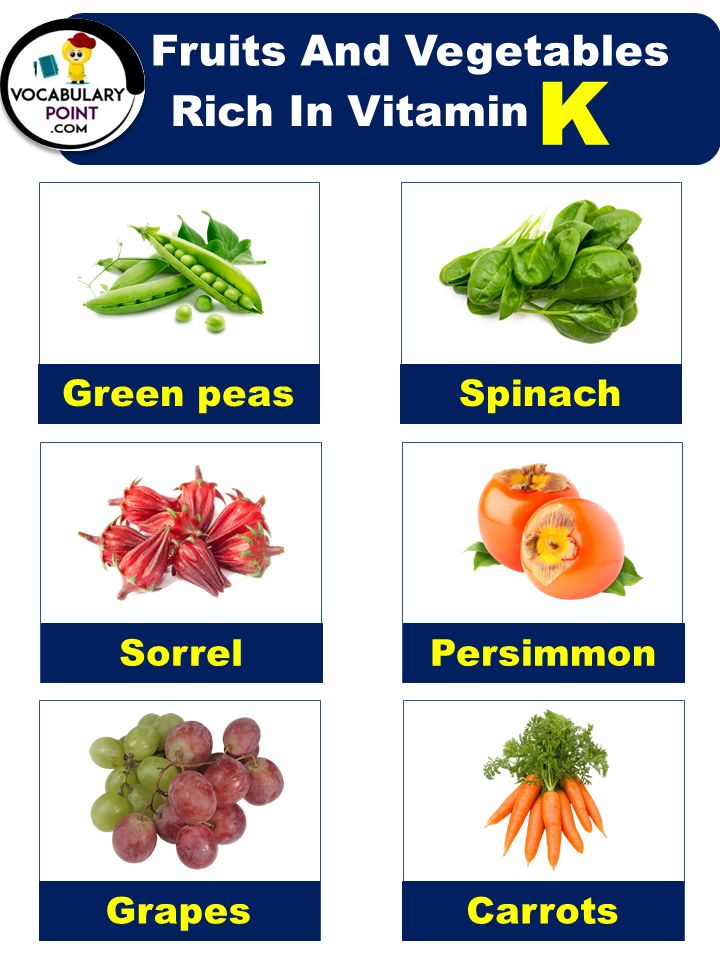
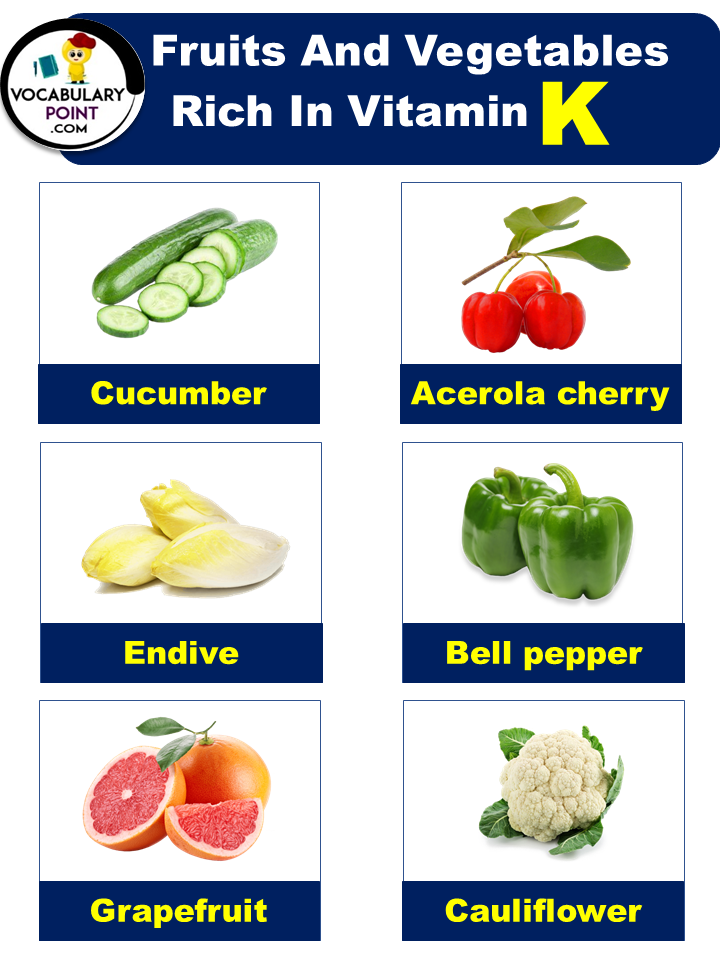
Fruit And Vegetables High In Vitamin K With Pictures
Cucumber
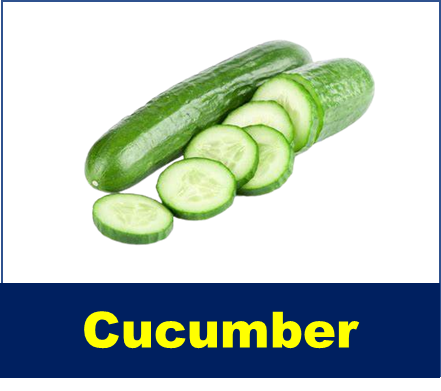
- Hydration:
Cucumbers are composed of over 95% water, making them an excellent natural source of hydration. Their high water content helps to keep the body and skin well-hydrated, aiding in digestion and promoting overall health.
Acerola cherry
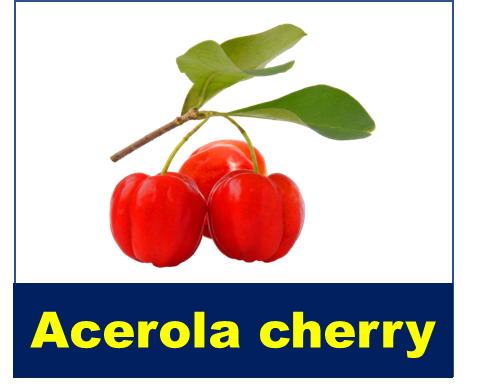
- Immune System Boost:
The combination of vitamin C and antioxidants in acerola cherries strengthens the immune system’s defenses, helping the body fend off infections and illnesses more effectively. This makes them a valuable addition to a health-conscious diet.
Endive
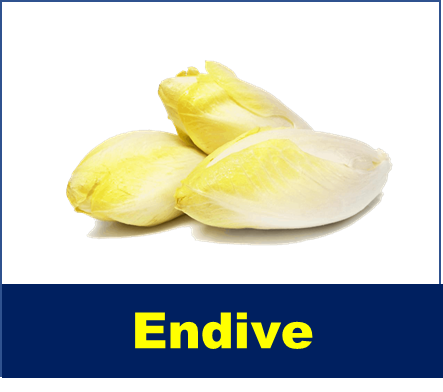
- Weight Management:
With very low calorie content and high water content, endive can be a valuable addition to a weight management plan. Its crunchiness and fiber content can help promote feelings of fullness, potentially reducing overall calorie intake.
Bell pepper
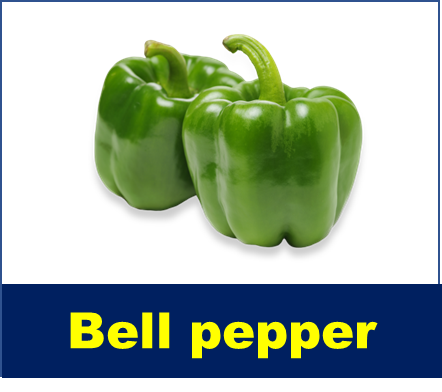
- Rich in Antioxidants:
Bell peppers are abundant in antioxidants such as vitamin C, beta-carotene, and quercetin. These compounds combat oxidative stress, support immune function, and reduce the risk of chronic diseases.
Grapefruit
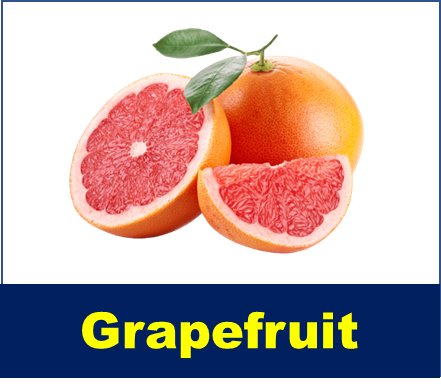
- Vitamin C Boost:
Loaded with vitamin C, grapefruit supports immune system function, aids in collagen production for healthy skin, and acts as an antioxidant that helps protect cells from damage.
Cauliflower
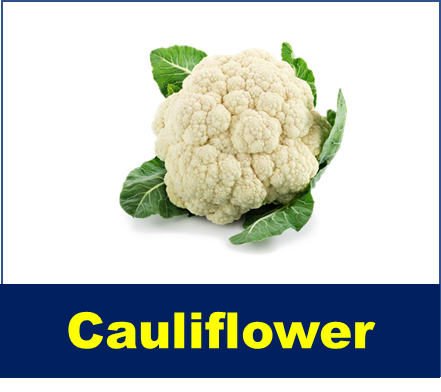
- Nutrient-Rich:
Cauliflower is a nutritional powerhouse, rich in vitamins such as vitamin C, vitamin K, and various B vitamins. It also provides minerals like potassium and magnesium, contributing to overall health and vitality.
Green peas
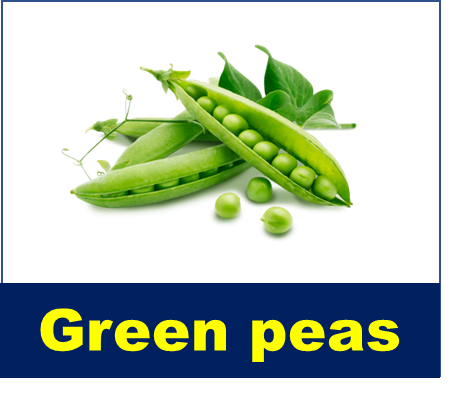
- Plant Protein Source:
Green peas are a good plant-based protein source, providing essential amino acids necessary for tissue repair, muscle maintenance, and overall growth.
Spinach
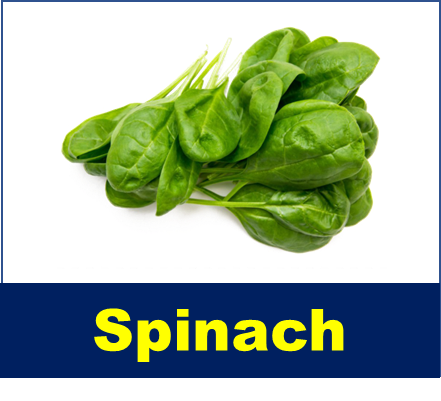
- Nutrient Abundance:
Spinach is packed with essential nutrients such as vitamins A, C, and K, as well as minerals like iron, magnesium, and potassium. This nutrient density supports overall health and well-being.
- Bone Health:
Rich in vitamin K and calcium, spinach contributes to maintaining strong and healthy bones. Vitamin K is specifically involved in bone mineralization and helps prevent bone fractures.
Sorrel
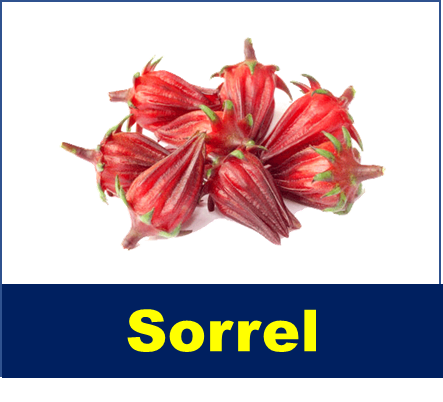
- Rich in Vitamins:
Sorrel is a good source of vitamins, particularly vitamin C which supports the immune system, skin health, and wound healing. It also contains vitamin A, contributing to healthy vision and immune function.
Persimmon
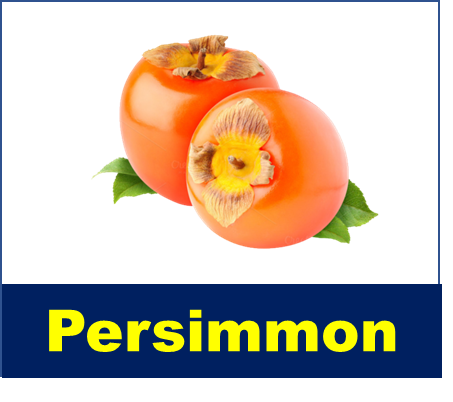
- Dietary Fiber:
Persimmons are a good source of dietary fiber, which supports healthy digestion by promoting regular bowel movements and preventing constipation.
Grapes
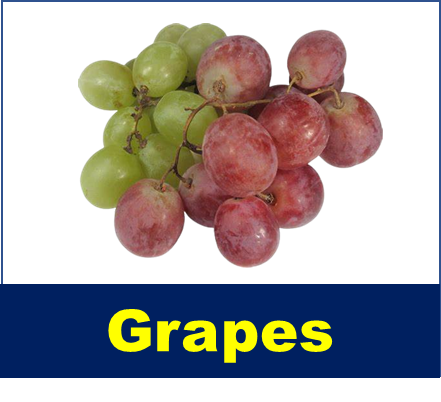
- Antioxidant-Rich:
Grapes are rich in antioxidants, such as resveratrol and flavonoids, which help protect cells from oxidative damage, reduce inflammation, and lower the risk of chronic diseases.
Carrots
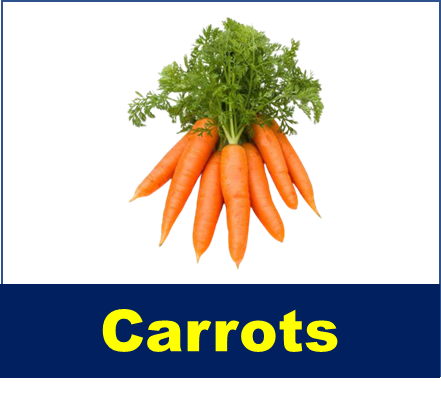
- Dietary Fiber:
High in dietary fiber, carrots support digestive health by promoting regular bowel movements and aiding in the maintenance of a healthy gut microbiome. The fiber content can also contribute to feelings of fullness, aiding in weight management.
